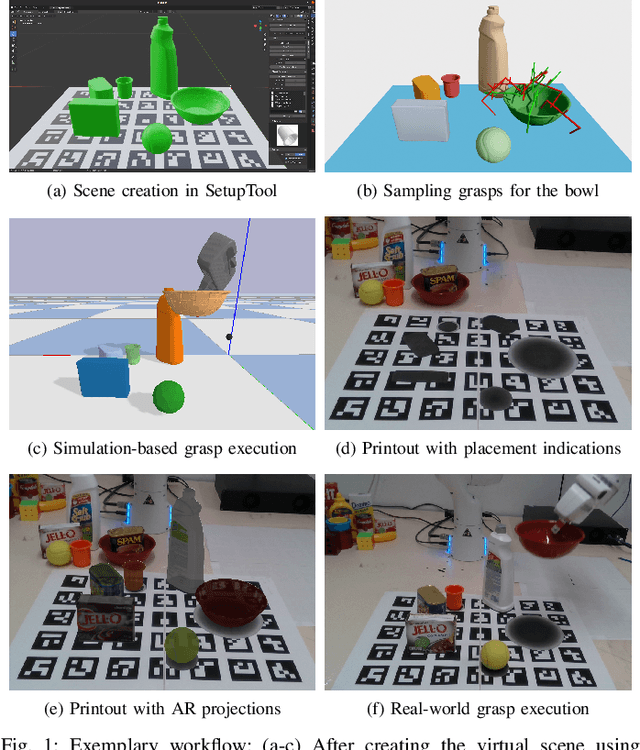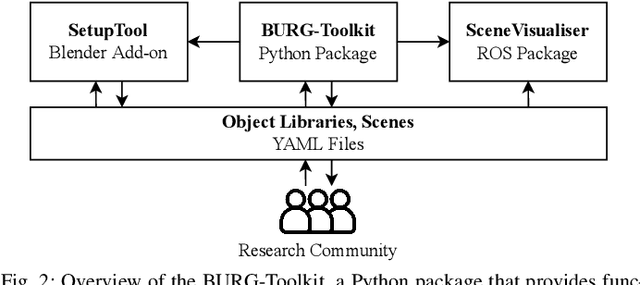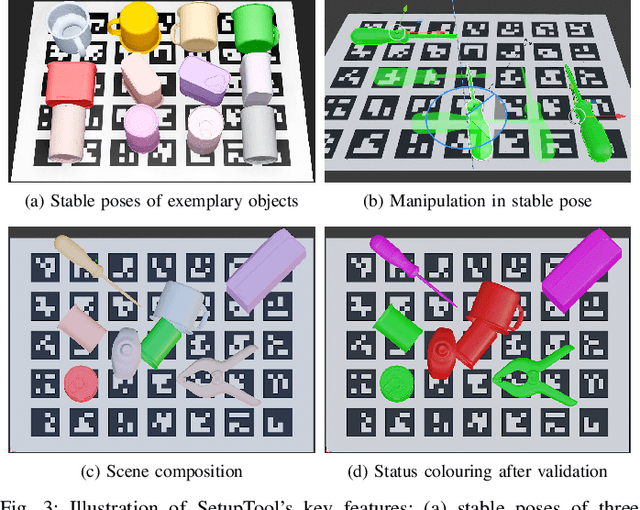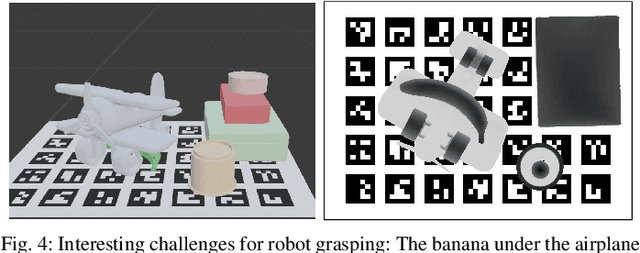Markus Suchi
BURG-Toolkit: Robot Grasping Experiments in Simulation and the Real World
May 27, 2022



Abstract:This paper presents BURG-Toolkit, a set of open-source tools for Benchmarking and Understanding Robotic Grasping. Our tools allow researchers to: (1) create virtual scenes for generating training data and performing grasping in simulation; (2) recreate the scene by arranging the corresponding objects accurately in the physical world for real robot experiments, supporting an analysis of the sim-to-real gap; and (3) share the scenes with other researchers to foster comparability and reproducibility of experimental results. We explain how to use our tools by describing some potential use cases. We further provide proof-of-concept experimental results quantifying the sim-to-real gap for robot grasping in some example scenes. The tools are available at: https://mrudorfer.github.io/burg-toolkit/
EasyLabel: A Semi-Automatic Pixel-wise Object Annotation Tool for Creating Robotic RGB-D Datasets
Mar 01, 2019



Abstract:Developing robot perception systems for recognizing objects in the real-world requires computer vision algorithms to be carefully scrutinized with respect to the expected operating domain. This demands large quantities of ground truth data to rigorously evaluate the performance of algorithms. This paper presents the EasyLabel tool for easily acquiring high quality ground truth annotation of objects at the pixel-level in densely cluttered scenes. In a semi-automatic process, complex scenes are incrementally built and EasyLabel exploits depth change to extract precise object masks at each step. We use this tool to generate the Object Cluttered Indoor Dataset (OCID) that captures diverse settings of objects, background, context, sensor to scene distance, viewpoint angle and lighting conditions. OCID is used to perform a systematic comparison of existing object segmentation methods. The baseline comparison supports the need for pixel- and object-wise annotation to progress robot vision towards realistic applications. This insight reveals the usefulness of EasyLabel and OCID to better understand the challenges that robots face in the real-world. Copyright 20XX IEEE. Personal use of this material is permitted. Permission from IEEE must be obtained for all other uses, in any current or future media, including reprinting/republishing this material for advertising or promotional purposes, creating new collective works, for resale or redistribution to servers or lists, or reuse of any copyrighted component of this work in other works.
 Add to Chrome
Add to Chrome Add to Firefox
Add to Firefox Add to Edge
Add to Edge